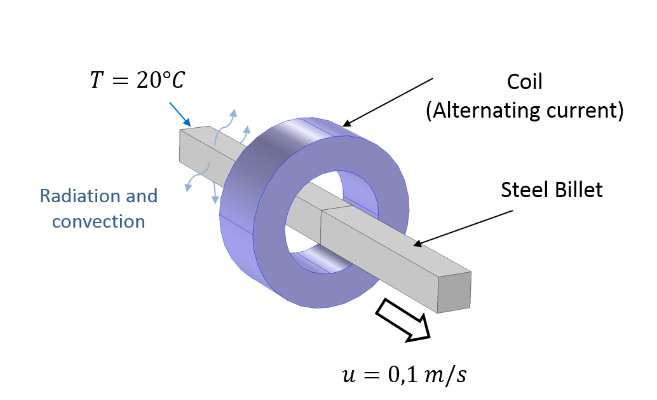Keywords
induction heating, heat transfer, electromagnetism, optimization, technological choices
Context / Goal
Induction heating is increasingly used in the industry because it provides advantages in terms of heating accuracy, efficiency and flexibility. To optimize this non-contact heating process, modeling is used to study the influence of each parameter (e.g. frequency) on a specific criterion (temperature distribution in the heated piece, for example). In this study, an industrial type of induction heating (scanning heating) is modeled and the influence of different shapes of inductors is studied.
SIMTEC's Achievements / Results
For confidentiality reasons, the modeling is described with a simplified model:
-
Problem description (with a simplified geometry)
The modeling of this electromagnetic and thermal coupled problem has been performed by SIMTEC with the COMSOL Multiphysics® software. The geometrical symmetries of the billet have been used to simplify the number of degrees of freedom for the thermal problem. Induced current in the steel billet and the resulting temperature field are illustrated here for a given frequency:
Given the skin effect, the higher the current frequency, the more the current flows on the surface of the billet. SIMTEC performed parametric studies on the frequency and electrical properties to obtain different distributions of temperature in the billet. Therefore, we have been able to suggest different technological solutions respecting the client's constraints.
-
Technological solutions
After the model validation, SIMTEC has proposed different types of inductors that can be implemented in production lines and give a satisfying temperature field through the billet. The influence of each inductor on the efficiency of the heating has been numerically quantified. It gives quantitative data to the client to guarantee the most appropriate choice.






